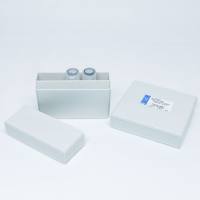Analysis of Synaptic Plasticity with the Slice Patch-Clamp Recording Technique
互联网
800
The practical details of the “blind” patch-clamp recording method and its usefulness and applications to the analysis of synaptic transmission and plasticity in brain slice preparations are described. The blind patch-clamp method displays its greatest power in the experiments in which long-term, stable recordings are required, such as those for the analysis of long-term potentiation (LTP) in hippocampal slices. Relatively thick slices, which have less damage during preparation, can be used with this method. Thus, the organization of neural tissues remains rather normal, which enables better, stable recordings. Recordings can be made from neurons located deeper in a slice, which are healthier than those near the surface. Furthermore, it is not necessary to clean and remove connective tissues around a recorded neuron, and the damage to a slice such as severance of the dendrite is minimal. These advantages make long-lasting, stable recordings possible during which the neuronal network is fairly well preserved. This method has been an indispensable tool in the analysis of synaptic plasticity.







